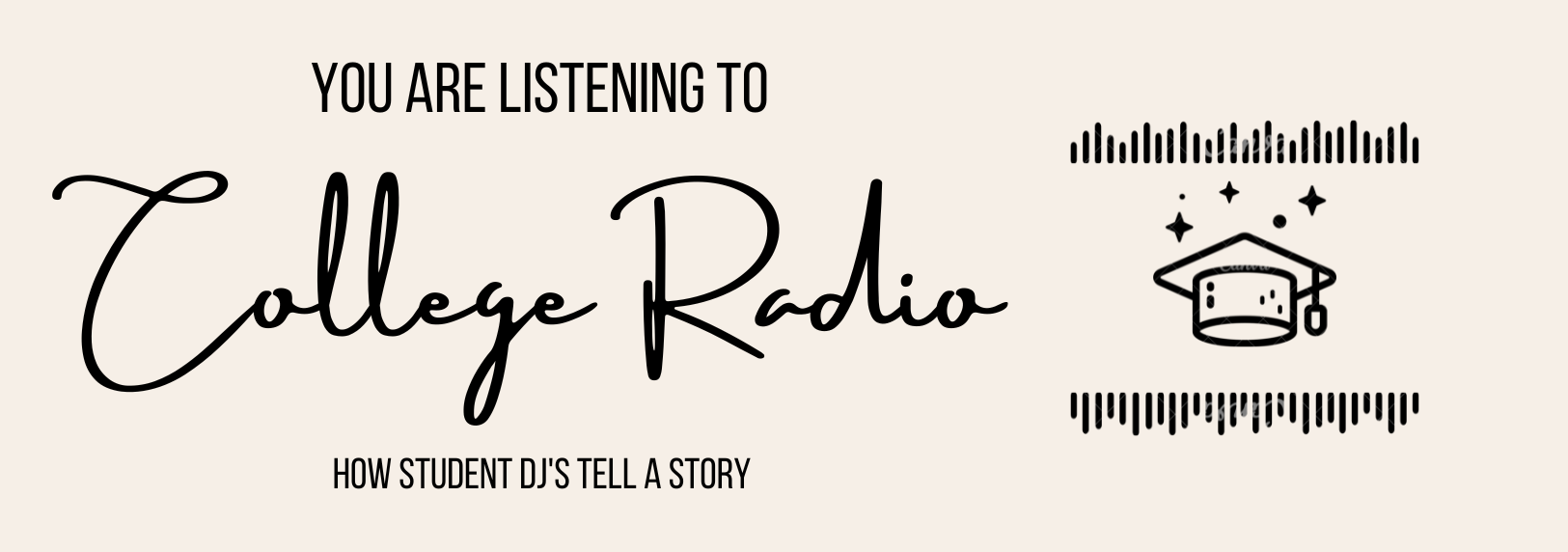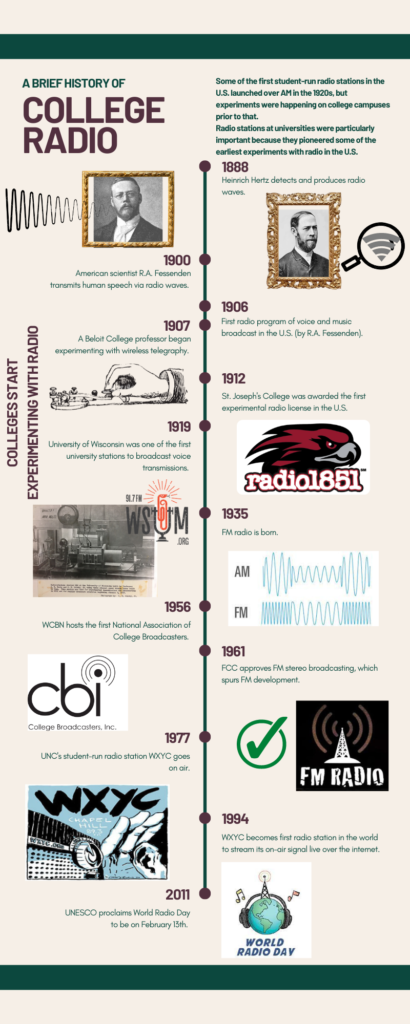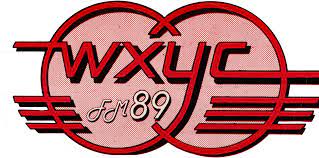
We’ve all listened the radio before. Maybe it was a way to get to know the newest and most popular releases or just as background noise for a long car-ride. As you drive, a static-y noise will continue until you find another station in the area.
But maybe you’ve never listened to college radio before.
College radios are small radio stations operated mainly by university students. They have limited and fairly localized audiences, but the listeners are from a much tighter community.
College radios offers a musical selection that consists not only of mega-hit songs, but also a wide variety of genres like punk, new wave, alternative, indie, and much more. They give airplay and promotional exposure to new emerging artists or any local artists.
In fact, many artists got their start from college radio. Coldplay is one of those artists. Their rapid rise to fame was partly influenced by the early support they got from American college radios for their first single Yellow that was released in October 2000. Other artists include Nirvana, R.E.M., The Smiths, and Sonic Youth.
In 2018, there is said to be at least 600 college radio stations in the United States.
Let’s look into the history of college radio:

In 1888, a German physicist named Heinrich Hertz detects and produces himself radio waves. He was the first to have conclusively proved the existence of electromagnetic waves. The unit of frequency was named “hertz” in his honor.
Reginald Aubrey R.A. Fessenden is best know for his pioneering work developing radio technology. In 1900, he was the first to transmit human speech by radio. Later, in 1906, he also made the first radio broadcast of entertainment and music.
Some of the first student-run radio stations launched over AM in the 1920s, but experiments were happening on college campuses before that. The very first college radio is not identified, but a few stations have claimed the title.
The earliest claim is about the professor from Beloit College who began experimented with wireless telegraphy in 1907. Beloit later built their own radio station in 1924.
St. Joseph’s College in Philadelphia was awarded the first experimental radio license in the United States in 1912, but also didn’t build a station until 1922.
In 1935, a huge change came to radio. FM radio was born. The frequencies in FM broadcasting was less susceptible to interference and other noises than AM, so FM was used for most audio broadcasts.
In 2011, World Radio Day was proclaimed and started by UNESCO and was adopted by the United Nations General Assembly.

UNC’s Radio Station
The University of North Carolina – Chapel Hill has a college radio too. The station name is WXYC and you can listen to it on 89.3FM. It broadcasts 24 hours a day, 365 days a year. Its coverage area encompasses Chapel Hill, Durham, Pittsboro, Apex, and parts of Raleigh.
WXYC first started on March 17, 1977 when they went on air with Joni Mitchell’s “You Turn Me on I’m a Radio”.
WXYC is the first radio station in the world to rebroadcast its signal over the Internet, which was done in November of 1994.
The station currently has approximately 150 UNC students and alumni who help out with the station.
A DJ at the student-run WXYC radio station at UNC, Mathangi Mohanarajah talks about the importance of music in her life and the message her sister was hoping to relay to her.
“I started to think differently about playlists and how they can really tell a story.”
Mathangi Mohanarajah
The playlists that her sister had made for her changed her perspective on music. For her, music was a way to express herself, not only musically but also in a literal sense.
Sources:
http://www.radiosurvivor.com/learn-more/about-college-radio/
https://www.warmmusic.net/post/the-relevance-of-college-radios
https://www.yardbarker.com/entertainment/articles/when_college_radio_went_mainstreamand_20_bands_that_came_with_it/s1__24952850#slide_1
http://www.wcbn.org/history/wcbntime.html
https://wxyc.org/about/
